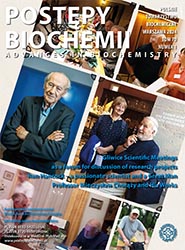From single DNA adducts measurement to DNA adductomics in molecular epidemiology of cancer
DOI:
https://doi.org/10.18388/pb.2021_509Abstrakt
ABSTRACT
Environmental carcinogens exert their carcinogenic effects by forming DNA adducts. This type of DNA damage can also be formed endogenously as a result of, e.g., oxidative damage. Unrepaired DNA adducts may induce mutations in critical genes, leading to the initiation of chemical carcinogenesis. Therefore, detection, identification, and quantification of DNA adducts is essential for cancer risk assessment. Over the last 50 years, the major DNA adducts formed by different classes of environmental carcinogens were characterized. With the development of techniques such as 32P-postlabeling, their measurement was implemented into molecular epidemiology. Advances in liquid chromatography-tandem mass spectrometry (LC-MS ) made the measurement of adducts more precise and allowed to gain knowledge about their identity and structures. Therefore, opened the way to DNA adductomics, the “omics” approach investigating DNA adducts comprehensively, similarly to proteomics. This review presents the historical perspective of DNA adducts research and the emerging field of adductomics.
Opublikowane
Licencja
Prawa autorskie (c) 2024 Wanda Baer-Dubowska, Hanna Szaefer

Utwór dostępny jest na licencji Creative Commons Uznanie autorstwa 4.0 Międzynarodowe.
Zawartość kwartalnika jest rozpowszechniana na licencji Creative Commons Uznanie autorstwa 4.0 Międzynarodowe (CC BY 4.0). Uznanie autorstwa — Utwór należy odpowiednio oznaczyć, podać link do licencji i wskazać jeśli zostały dokonane w nim zmiany . Możesz to zrobić w dowolny, rozsądny sposób, o ile nie sugeruje to udzielania przez licencjodawcę poparcia dla Ciebie lub sposobu, w jaki wykorzystujesz ten utwór.
Prawa autorskie do prac © pozostają przy autorach.
Prawa autorskie do czasopisma © posiada Polskie Towarzystwo Biochemiczne.




